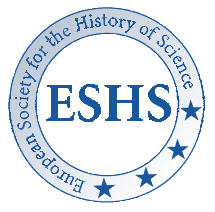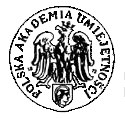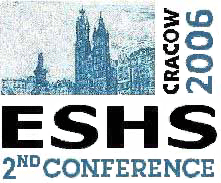Last modification: 25 September 2008
Online Book of Abstracts - A Thematic List:
SESSIONS / SYMPOSIA
Edited by Michal Kokowski
http://www.cyfronet.pl/~n1kokows/home.html
n1kokows@cyf-kr.edu.pl
Symposium R-9.
GLOBAL PHYSICS AND LOCAL RESEARCH IN THE 20TH CENTURY
ORGANIZERS OF THE SYMPOSIUM:
Helghe KRAGH (Aarhus, Denmark)
ivhhk@phys.au.dk
Pasquale TUCCI (Milano, Italy)
pasquale.tucci@unimi.it
CHAIRPERSONS OF SESSIONS OF THE SYMPOSIUM:
Helghe KRAGH (Aarhus, Denmark)
ivhhk@phys.au.dk
Maiken LOLCK (Aarhus, Denmark)
lolck@si.au.dk
Pasquale TUCCI (Milano, Italy)
pasquale.tucci@unimi.it
R-9.
Developing a technique for researches in cosmic-ray physics:
Nuclear emulsions from Bristol to Europe
Leonardo GARIBOLDI (Milano, Italy)
leonardo.gariboldi@unimi.it
In the first stage of a history of nuclear emulsions, physicists began to use this technique to study cosmic radiation and nuclear disintegrations on the Austrian Alps. Following a suggestion by Heitler, Cecil F. Powell decided to study them as a useful tool for researches in nuclear and cosmic-ray physics (with the related problems of developing satisfying microscopes and new devices to get macroscopic visualisations of the tracks). In the second stage, the group of Bristol, led by Powell and supported by the emulsion panel, obtained important results, above all the discovery of the pi-meson. These impressive steps stimulated other groups of physicists in Europe to adopt the nuclear emulsions technique, also in international collaborations with Bristol as "the big sun surrounded by little satellites". The third stage began with the production of emulsions for the tracks at the minimum of ionisation leading to the complete detection of the pi-mu-e-decay and to the study of strange mesons. The transition to the fourth stage was considered a "Revolution in Nuclear Physics" when physicists were able to "play" with the chemical components and the supporting grids to get the most useful emulsions for any particular problem to be solved. Fundamental contributions to the development of the nuclear emulsions technique were given by one of Powell's collaborators, the Italian physicist Beppo Occhialini who was also one of the leaders of the Belgian and Italian groups of research in cosmic radiation. Among his contributions, we have to mention the temperature development method to process thick emulsions, the wire method of loading, and the use of cylindrical emulsions.
R-9.
The Internationalization of Physical Cosmology
Helge KRAGH (Aarhus, Denmark)
helge.kragh@si.au.dk
It is ironic that cosmology, which by its very nature should be elevated above national differences, for a very long time has exhibited national characteristics. In a talk delivered at the meeting of the International Astronomical Union in 1931, A. Eddington praised cosmology as a subject which "disperses the galaxies, but unites the Earth." Yet this was wishful thinking, for ever since Einstein founded modern cosmology in 1917, the field was small, scattered and limited to a few nations. Observational cosmology was American-based, while cosmological model-building was dominated by British scientists. Still in the 1950s, cosmology was marked by national differences and to some extent coloured by different "national styles." Big bang theory, as developed by G. Gamow and others, was exclusively an American theory, and the rival steady state theory (of F. Hoyle and others) was cultivated only in England. In the Soviet Union, research in cosmology was largely absent, more for political than scientific reasons. Only in the 1960s, with the emergence of the "hot big bang bang standard model," did the differences reduce and cosmology became truly international. From that time onwards it was no longer possible to tell an author's nationality from the cosmological theory he or she advocated. During the last twenty years or so, cosmology has become "big science" (in more than one sense) with observations done by multinational collaborations, much in the CERN style. Although the United States is the leader of contemporary cosmology, the field is thoroughly international with important contributions made by European scientists and organizations (such as ESO, the European Southern Observatory).
R-9.
Greenland Ice Sheet Project:
Collaboration of local specialisations on global problems
Maiken LOLCK (Aarhus, Denmark)
lolck@si.au.dk
The study of the climate system is one of the fields of modern research that is the most global in nature, but the methods of climate study have been perceived under particular, local circumstances. The success of one particular branch of climate research - the study of Greenland ice cores - has been highly dependent on the collaboration of local research groups with diverse expertises in the analysis of ice cores, to extract as much information on past climate from the ice as possible.
In the early 1970's the first international collaboration on the retrieval and analysis of Greenland ice cores was established as the Greenland Ice Sheet Project, GISP. The participating nations were Denmark, Switzerland and the United States. Using a contextual approach I will discuss how this collaboration was established, and why and how two small European countries participated as equal partners in the collaboration.
Trying to answer these questions requires a look into the political circumstances of glaciological research in Greenland - the fact that Greenland is Danish territory and that the United States had great military interests in Greenland because of its strategic significance during the Cold War. Also the economic and technological aspects of ice core research were important in the development of GISP. Especially I will discuss how the differences in research organisation in Europe and in the US played an important role in the failure to develop an American ice drill and the success of a Danish drill. Finally I will look into how the different scientific approaches to the study of ice cores have complemented each other and enriched our understanding of the changing climate.
R-9.
The reception of the De Broglie principle in England
Jaume NAVARRO (Cambridge, The Great Britain)
jn242@cam.ac.uk
In 1923, the aristocrat Louis de Broglie published three papers in the Comptes Rendus of the Academy of Sciences in which he tried to reconcile relativity, quantum mechanics and the electron. His dissertation, submitted the following year, established the duality principle by which electrons could be thought to have both wave and particle properties. In 1926, the principle was used by Erwin Schrödinger to formalise the new quantum mechanics in a way that was soon to be seen consistent with Heisenberg and Bohr's formalisation.
The theoretical development of quantum mechanics was mainly a continental enterprise. Göttingen and Copenhagen were the main centres of such development, while British universities remained in the periphery of theoretical quantum physics. One of the big names of British physics, Ernst Rutherford, head of the Cavendish laboratory in Cambridge, was somewhat reluctant to engage in what he saw as esoteric and philosophical discussions. His approach to physics paid a major attention to the experimental work.
In this paper I want to study the reception of de Broglie's principle in England, especially in Cambridge. Charles Ellis, working at the Cavendish, was soon interested in the duality principle and in the possibility of detecting the wave associated to an electron. Rutherford, however, discouraged him from such experiments. Another Cambridge man, G.P. Thomson, then head of the newly created laboratory of physics in Aberdeen, was to be the first to measure the wave associated to the electron, observations for which he was to receive the Nobel Prize in 1938. The core of this paper will focus on the transfer of theoretical and experimental skills from Cambridge to Aberdeen, and on the comparison of these with the theoretical context in which de Broglie's principle was formulated.
R-9.
The G-Stack collaboration and the Mediterranean flights (1952-1955):
a first example of
European collaboration in particle physics
Cristina OLIVOTTO (Milano, Italy)
cristina.olivotto@gmail.com
Leonardo GARIBOLDI (Milano, Italy)
leonardo.gariboldi@unimi.it
Starting from summer 1952 a series of international balloon flights for the study of K-mesons was undertaken by a pioneering collaboration between several European laboratories, and concluded with the G-Stack collaboration in autumn 1954. The balloon, launched from Novi Ligure (Italy), was loaded with 15 litres of nuclear emulsions and reached an altitude between 23 and 30 km for six hours. The paper discussing the results of the flight, (Nuovo Cimento, November 1955) is usually referred to as the first paper with the first page fully filled with the authors' names (more than 30 physicists from 8 laboratories, coordinated by the Bristol, Milan and Padua groups). The aim of our work is to show how the Mediterranean flights were the first important example of Europeisation of physics research during the years of the post-war reconstruction and to discuss the contribution of the G-Stack collaboration from a scientific and a sociological point of view. The analysis will focus on the following aspects: a) the historical reconstruction of the flights and the constitution of a European network of laboratories based on the documents collected in C.F. Powell, P.H. Fowler Archives (Bristol), E. Amaldi Archive (Rome) and Occhialini papers (Milan); b) the ideal and scientific aims of the collaboration; c) the technique used (large polyethylene balloons, nuclear emulsions); d) the scientific results (from an analysis of the related published papers); e) the social importance of the flights. We conclude our work with some considerations about the G-Stack as the last significant contribute of cosmic-rays research to particle physics based on published reminiscences and oral interviews to the protagonists.
R-9.
From Möbius to Heisenberg - Mathematical and theoretical physics in Leipzig 1830 - 1945
Karl-Heinz SCHLOTE (Leipzig, Germany)
Schlote@saw-leipzig.de
The development of physics in the 19th century was characterized by its substantial broadening and the emergence of new subdisciplines like electrodynamics. A consequence of this progress was the genesis of the theoretical physics in the last third of the century. After the first upswing and a consolidation at the turn to the 20th century quantum mechanics as well as atomic and nuclear physics gave a strong new impetus which brought theoretical physics to those central position within physics that it takes today.
The paper compares the general characterization of the process in Germany in the 19th and the first half of the 20th century and its development at the university of Leipzig. Due to the special conditions at the university or individual opinions on the solving of physical problems there are striking deviations from the general way. Therefore some institutional and personnel changes as well as their consequences are described. Especially the different point of views on mathematical and theoretical physics and their duty in physical research was sketched. It is followed by some remarks on the distinction between both domains. Leipzig's mathematicians foremost Carl Neumann preferred a mathematical physics that was coined by mathematical aspects. Neumann overemphasized the role of mathematics for the progress of a physical theory and to do so he fostered a clear distinction between mathematical and theoretical physics. The prominent position of mathematical physics at Leipzig's university also delayed the establishment of a professorship in theoretical physics at its Physical institute. About three decades later Leipzig's Physical Institute with Heisenberg, Hund, and Debye became a centre of theoretical physics in Germany.
R-9.
Triangle collaboration
Juraj SEBESTA (Bratislava, Slovakia)
sebesta@fmph.uniba.sk
At the beginning of December 1968 Triangle Collaboration has started. Until 1970 there was "pure" triangle collaboration Bratislava - Budapest - Vienna: joint seminars organised by Slovak, Hungarian and Austrian physicists. After 1970 the institutes from other cities have joined the "triangle towns" so "extended" or "regional collaboration" originated. We found that following towns (countries) belong to the regional collaboration: Vienna, Graz (Austria), Budapest (Hungary), Bratislava, Praha (Czechoslovakia), Zagreb, Belgrade (Yugoslavia), Trieste, Milan (Italy), Kraków, Warszawa (Poland). So in 1970´s all countries from so called Hexagonal or Central-European Initiative took part in "regional collaboration" on elementary particle physics. One can say that physicists have started to collaborate two decades sooner than politicians.
Later physicists from many "non-triangle" countries were taking part in triangle meetings - either as lecturers or as participants. We counted 18 countries (and CERN) and 40 towns. Step by step this collaboration turned to European one. Gradually specific structure of meetings were formed: summer schools (Adriatic meetings) in Yugoslavia at the end of August and during September, symposium at Visegrad (or in Matrafüred) in Hungary at late of September, conference Hadron Structure in Slovakia (October or November) and Triangle meeting at Vienna at the end of November. Organizers of triangle events have published lectures and short communications presented on seminars, colloquia, conferences and schools. Personal collaborations between researchers from participating countries were begun.
R-9.
Giuseppe Paolo Stanislao Occhialini: a cosmopolitan scientist
Pasquale TUCCI (Milano, Italy)
pasquale.tucci@unimi.it
Son of Raffaele Augusto Occhialini e di Etra Grossi, Giuseppe Occhialini was born in December 5th, 1907 in Fossombrone, near Pesaro, in the centre of Italy. He gave important contributions to the studies of the cosmic rays and boosted the birth of the Space physics in Italy and in Europe. He worked in England, in Brasil, in Belgium and spent some months in several other countries.
His image of scientist, as remembered by many of his younger colleagues, is that one of a special person: genial, generous, extravagant; in short a myth for is collaborators. On the occasion of 100 years of his birth the Departments of Physics of the two Milanese Universities organize many initiatives to remember Occhialini: the publication of a book, the organization of a Congress and a exhibition and many other minor events.
In my communication I'll give a sketch of his personality from scientific and human point of view. I'll try to understand how the myth aroused and grew during the years, what kind of documentation can support "mythical" interpretation of his behaviour, and I'll describe what will be done in Milan.
R-9.
Nuclear physics instrumentation in Norway: 1933-1955
Roland WITTJE (Trondheim, Norway)
Roland.Wittje@phys.ntnu.no
Through the late 1940s and the 1950s, nuclear scientists, technologists and administrators in Norway were deeply split about the nation's goals, organisation, politics, and - essentially related to this - research instrumentation for nuclear science. One faction was determined to build Norway's first nuclear reactor, while another did not want a reactor at all. Whereas the first faction consisted of statesmen of science and research technologists, the second comprised academic scientist, most of whom had started their research career in nuclear physics in the 1930s. In order to understand this conflict, I will follow the development of research and instrumentation in nuclear physics both inside and outside Norway from the early 1930s to the mid-1950s. This period covers the time when scientists and engineers started to develop large-scale research instrumentation for nuclear physics research, followed by wartime experience and the American, British and German nuclear weapon projects, and ends with the beginning of the Cold War. The onset of the Cold War was characterised by secrecy in nuclear technology, the rise of the military-industrial-academic complex, particularly in the USA, and the beginning of European large-scale scientific co-operations. My overview will begin with early design and construction of particle accelerators by Odd Dahl and Rolf Widerøe, and follow the building of the first accelerator in Trondheim in the mid-1930s, the involvement of Norwegian scientists and engineers in wartime research and nuclear espionage and the post-war accelerator programs at the Norwegian universities. I will then look at the dispute about the building of the first research reactor, which went critical in 1951. My narrative will conclude with the early stages of Norwegian CERN cooperation up to the mid-1950s.






